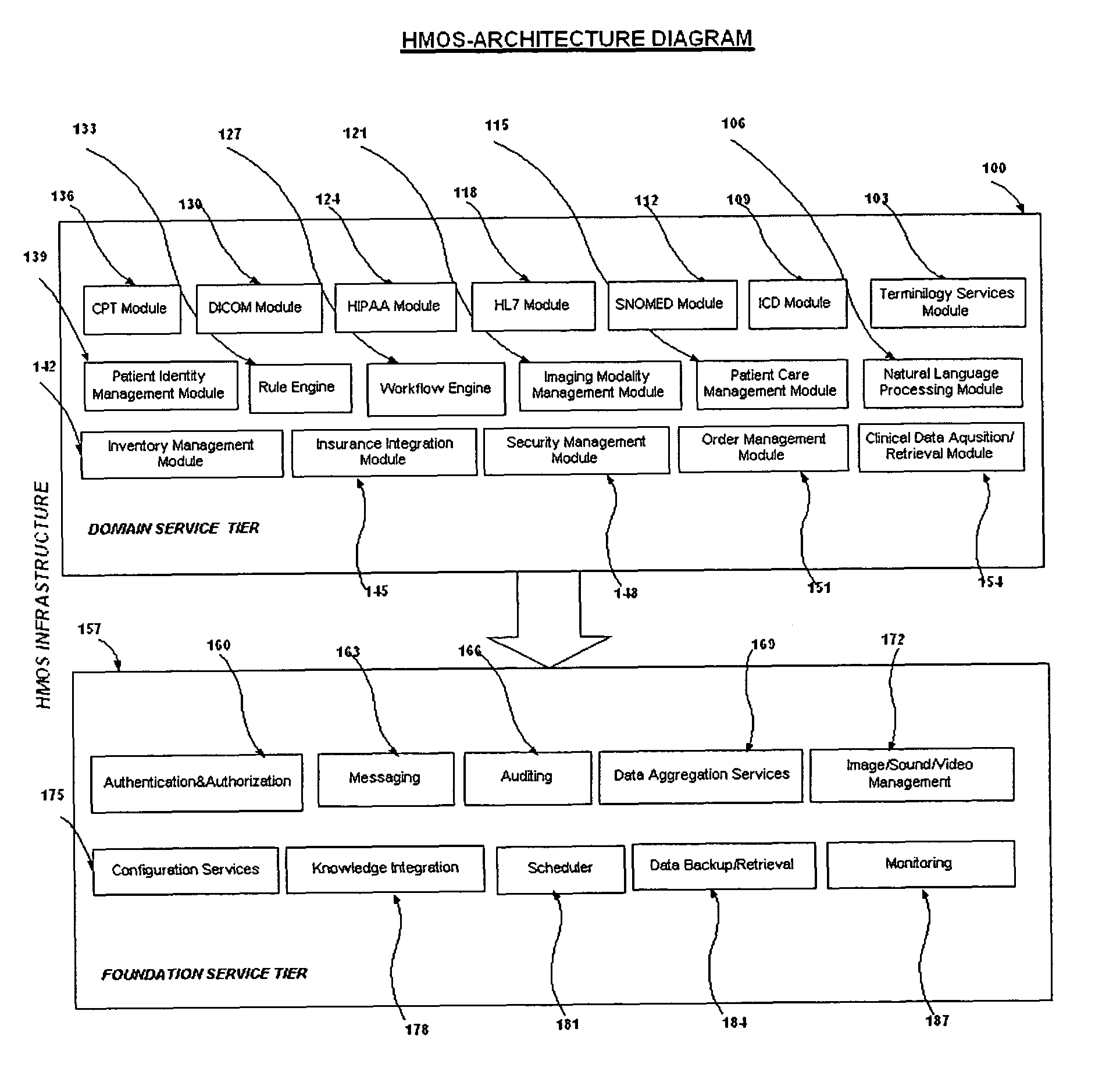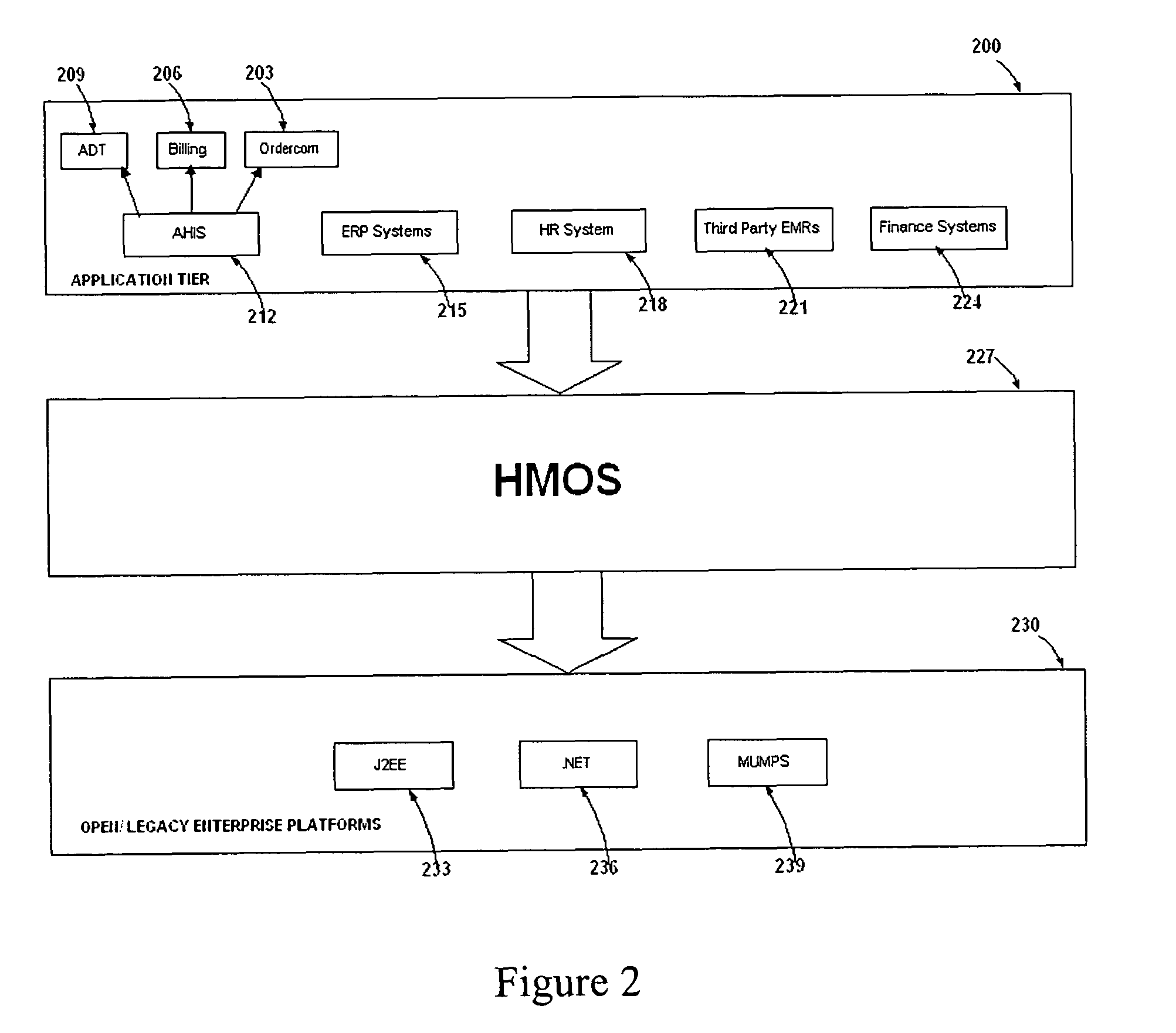System and method to develop health-care information systems
a technology of information systems and health care, applied in the field of information technology, can solve the problems of affecting the quality of life of patients, and prone to misreading physician instructions, and causing life-threatening side effects
- Summary
- Abstract
- Description
- Claims
- Application Information
AI Technical Summary
Benefits of technology
Problems solved by technology
Method used
Image
Examples
example scenario
Patient Admission Process
1: Legacy Systems
[0196]One of the most common and important process in any health care information system is the patient admission process. Patients who requires full time attention by a trained physician, those who are directed by the doctors to undergo certain procedures or services for some dates, and those who are going to undergo certain surgeries etc. has be admitted in the hospital. Whenever the doctor suggested that the patient has to admit for certain procedures, the actual admission process starts.
[0197]In the available legacy systems the capability of transferring concurrent knowledge across the different set of users is not that effective. So the process flow becomes very slow and tiresome. When the data is distributed across the network the transfer would still be slower and the data may not be the real time data.
[0198]The entire admission process can be considered as a set of smaller workflows and the process transaction manager should make sur...
PUM
 Login to View More
Login to View More Abstract
Description
Claims
Application Information
 Login to View More
Login to View More - R&D
- Intellectual Property
- Life Sciences
- Materials
- Tech Scout
- Unparalleled Data Quality
- Higher Quality Content
- 60% Fewer Hallucinations
Browse by: Latest US Patents, China's latest patents, Technical Efficacy Thesaurus, Application Domain, Technology Topic, Popular Technical Reports.
© 2025 PatSnap. All rights reserved.Legal|Privacy policy|Modern Slavery Act Transparency Statement|Sitemap|About US| Contact US: help@patsnap.com



